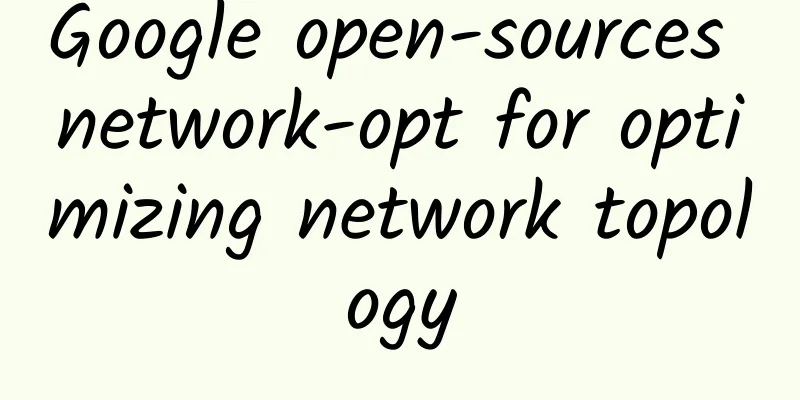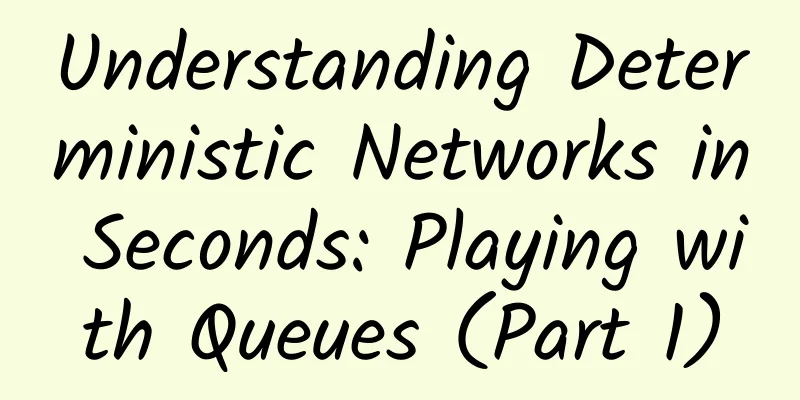AI adds power, lossless network leads to the next stop

|
How efficient can network transmission be? Let's explore the secrets of "lossless network". "Eastern Data and Western Computing" is hot, and there is a "new path" for the accelerated development of the digital economy With the launch of the "Implementation Plan for the Computing Hub of the National Integrated Big Data Center Collaborative Innovation System", "Eastern Data and Western Computing" and "Innovative Development of Data Centers" have become hot topics of great concern in the industry. "Eastern Data and Western Computing" is a national strategic project to build a "national hub node of the national integrated computing network", which aims to improve the unbalanced layout of my country's digital infrastructure and enable data centers to play a "leading role" in the development of the digital economy. The "East Data West Computing" project will form a new computing network pattern oriented towards data flow in the future. In this context, we urgently need a next-generation network that can provide bearer and enable the development of the digital economy to truly embark on a fast and steady road. As a representative of the development of the next-generation network, "lossless network" has entered our field of vision with its vigorous innovative development momentum. What is lossless networking? Lossless, as the name implies, means "zero" loss. The loss here refers to the main indicators such as protocol packet forwarding, response time, processing time, and device throughput during network transmission. The answer is obvious. A lossless network is a network environment that can achieve "zero packet loss, low latency, and high throughput". Its goal is "the lower the latency, the better, and the higher the efficiency, the better". Therefore, compared to the "lossy" network environment with packet loss and high latency, lossless networks have made improvements and innovations in congestion control, flow control, packet forwarding, and routing selection to meet the needs of efficient storage of massive computing power and massive data in data centers, greatly improving the user experience.
With the rise of cloud computing, big data, artificial intelligence and 5G, network data has exploded, which has put forward higher requirements for data processing performance and data center construction. Currently, in business scenarios such as HPC (High Performance Computing), distributed storage, and AI, the use of RDMA protocol to reduce CPU processing and latency and improve application performance has become the development direction of data center networks in the computing era. Among them, the RDMA network achieves lossless protection by deploying PFC (Priority-based Flow Control) and ECN (Explicit Congestion Notification) functions in the network. PFC is a queue-based back pressure technology that ensures that the traffic of the RDMA-exclusive queue on the link is controlled, and back pressure is applied to the traffic of the upstream device when congestion occurs at the switch ingress port. In a single-machine scenario, PFC can quickly and effectively adjust the server rate to ensure that the network does not lose packets. However, in a multi-level network, problems such as unfair speed reduction, PFC storm, and PFC deadlock will occur. Therefore, when PFC is enabled in a data center, it is necessary to strictly monitor and manage Pause frames to ensure network reliability. Figure 1: PFC Process ECN is a flow-based end-to-end flow control technology that ensures end-to-end congestion control. When the switch egress port is congested, ECN marks the data packets and asks the traffic sender to reduce the sending rate. ECN is better than PFC in terms of effect, but it also has the following problems:
Figure 2: ECN process
From the perspective of lossless network design, in order to give full play to the high-performance forwarding of the network, when configuring ECN and PFC together, it is necessary to adjust the buffer waterline threshold of ECN and PFC through expert experience, so that ECN is triggered before PFC. That is, the network continues to forward data at full speed, and the server actively reduces the packet sending rate. If the problem still cannot be solved, PFC can be used to make the upstream switch suspend packet sending. In this way, although the throughput performance of the entire network is reduced, it will not cause packet loss. Figure 3: ECN + PFC combination process ECN & PFC's "distant friendship and near attack" under the challenges of traffic and rate In a RoCE network, building a lossless Ethernet requires supporting the following key features:
Among them, the biggest difficulty of ECN is that the waterline setting is relatively complicated, and it needs to be designed in combination with the network architecture and business characteristics. However, the traffic in the existing network is complex and changeable, resulting in the static ECN waterline threshold function based on expert experience not being able to cover all traffic scenarios, and unable to ensure that lossless services achieve optimal performance. AI ECN uses AI algorithms to achieve waterline adjustment of lossless queues. Through the traffic model trained by AI, it can predict the changing trend of network traffic in real time and dynamically adjust the ECN waterline threshold, thereby achieving accurate scheduling of lossless queues and ensuring the optimal performance of the entire network. H3C AI ECN algorithm AI-powered performance leads the industry In this context, H3C launched the AI ECN intelligent lossless algorithm , which can train the traffic model through reinforcement learning algorithm according to the network traffic model (N + 1 Incast value, queue depth, large and small flow ratio and other traffic characteristics), perceive and predict the trend of network traffic changes in real time, automatically adjust the optimal ECN waterline, and accurately schedule the queue. While trying to avoid triggering network PFC flow control, it also takes into account the forwarding of delay-sensitive small flows and throughput-sensitive large flows, further ensuring the optimal performance of the entire network. The AI ECN optimization algorithm processing flow adopted by H3C AD-DC SeerFabric solution is as follows: Figure 4: AI ECN Process As an important part of H3C AD-DC SeerFabric lossless network solution, the AI ECN algorithm realizes the dynamic adjustment of the ECN waterline in the outbound port queue, so that network equipment can achieve low transmission delay and high throughput in various communication networks or real-time changing communication networks, and improve the flexibility of network congestion control. In the actual networking test, various performance indicators have been greatly improved, and the goal of boosting RDMA network performance has been well achieved. Three unique engines drive the accelerated evolution of intelligent lossless networks Earlier this year, H3C officially released the AD-DC SeerFabric lossless network solution. Based on the cloud-edge AI collaborative architecture, through the optimization and innovation of the industry's AI ECN tuning algorithm, combined with the local AI Inside capabilities of H3C data center switches, it maximizes throughput and reduces latency while ensuring zero packet loss, ensuring accurate forwarding of network services and certainty of network service quality. At the same time, through refined intelligent operation and maintenance, the business experience of the RoCE network is visualized. The core driving force of H3C AD-DC SeerFabric lossless network solution comes from three key intelligent components:
Figure 5 AD-DC SeerFabric lossless network solution architecture Entering the intelligent era driven by technologies such as 5G, cloud and AI, high-throughput, low-latency lossless networks have become a common demand for the development of network services. In the future, based on "Cloud Native" and "Digital Brain 2021", H3C Group will continue to work with industry partners to actively promote the standardization and application of intelligent lossless networks, provide standard and open products, solutions and services, continue to empower the ecosystem, and contribute to the construction of new national data centers. From lossless networks to lossless worlds, all kinds of scenes in science fiction movies are about to become a reality. H3C will continue to discover more exciting lossless worlds with you. |
<<: An article to reveal the hot and cold knowledge of SRv6, the "newcomer" of the network
>>: How low-code platforms enable machine learning
Recommend
Verizon to launch 5G home internet service in Cleveland
Verizon announced Wednesday that it will launch 5...
Gcore (gcorelabs) Russian Vladivostok VPS simple test
It has been a while since I shared information ab...
Russia launches first ultra-fast 5G network
According to foreign media reports, Russian telec...
HTTP connection management diagram
[[414965]] Hey guys, this is programmer cxuan, we...
Survey shows: SD-WAN deployment is growing rapidly, MPLS will not disappear
Recently, Cato Networks released a survey report ...
[Black Friday] Virtono virtual hosting/VPS 30% off for the first month, 50% off for down payment or 30% off forever
Virtono is a foreign VPS hosting company founded ...
[11.11] RackNerd: $11/year-1GB/12G SSD/2TB/San Jose/Seattle/Dallas and other data centers
RackNerd has launched this year's Double 11 p...
Won the award again! Ruijie Networks won the title of "2021 ICT Industry Influential Enterprise"
On January 6, the "2022 ICT Industry Trends ...
Wi-Fi 6 Development Status and Future Application Trends
Connections are given more profound value in the ...
With ten times storage cost savings, SINO ADM helps enterprises reduce costs and increase efficiency
Preface The COVID-19 pandemic has had an unpreced...
What you don’t know about blockchain is quietly subverting banks, BAT
Fintech is a phenomenal concept. With the rapid d...
Sharktech: 50% off on Los Angeles high-security VPS, 2GB RAM/30GB SSD/4TB bandwidth starting at $6.57 per month
Sharktech Shark Data Center VPS 50% discount code...
Expert Viewpoint: Is it time to go wireless?
Regardless of any technical requirements, the adv...
Fact or fallacy: How smart can you get without 5G?
Smart city development relies on the expansion of...
With the arrival of 5G, will the newly replaced 4G mobile phone become obsolete?
"Three Gigabits" will be implemented in...









